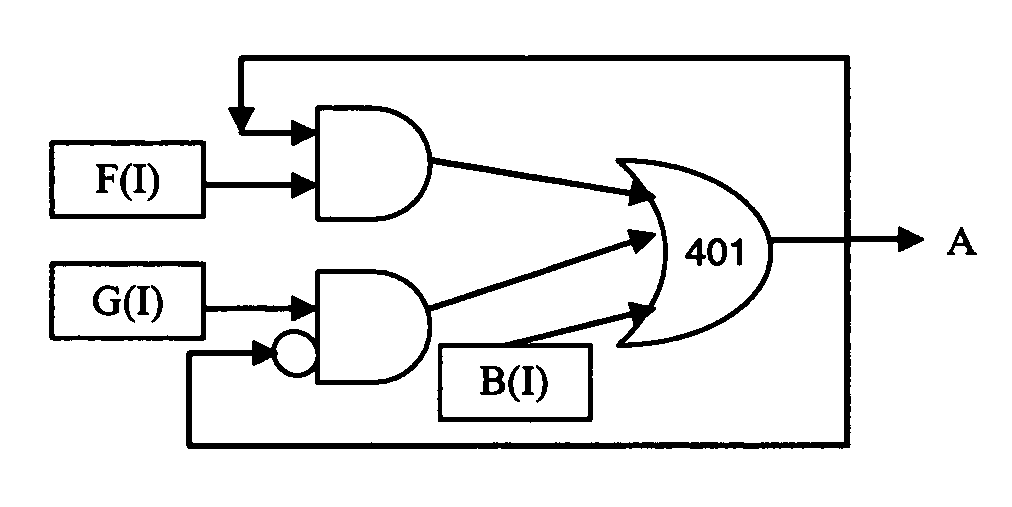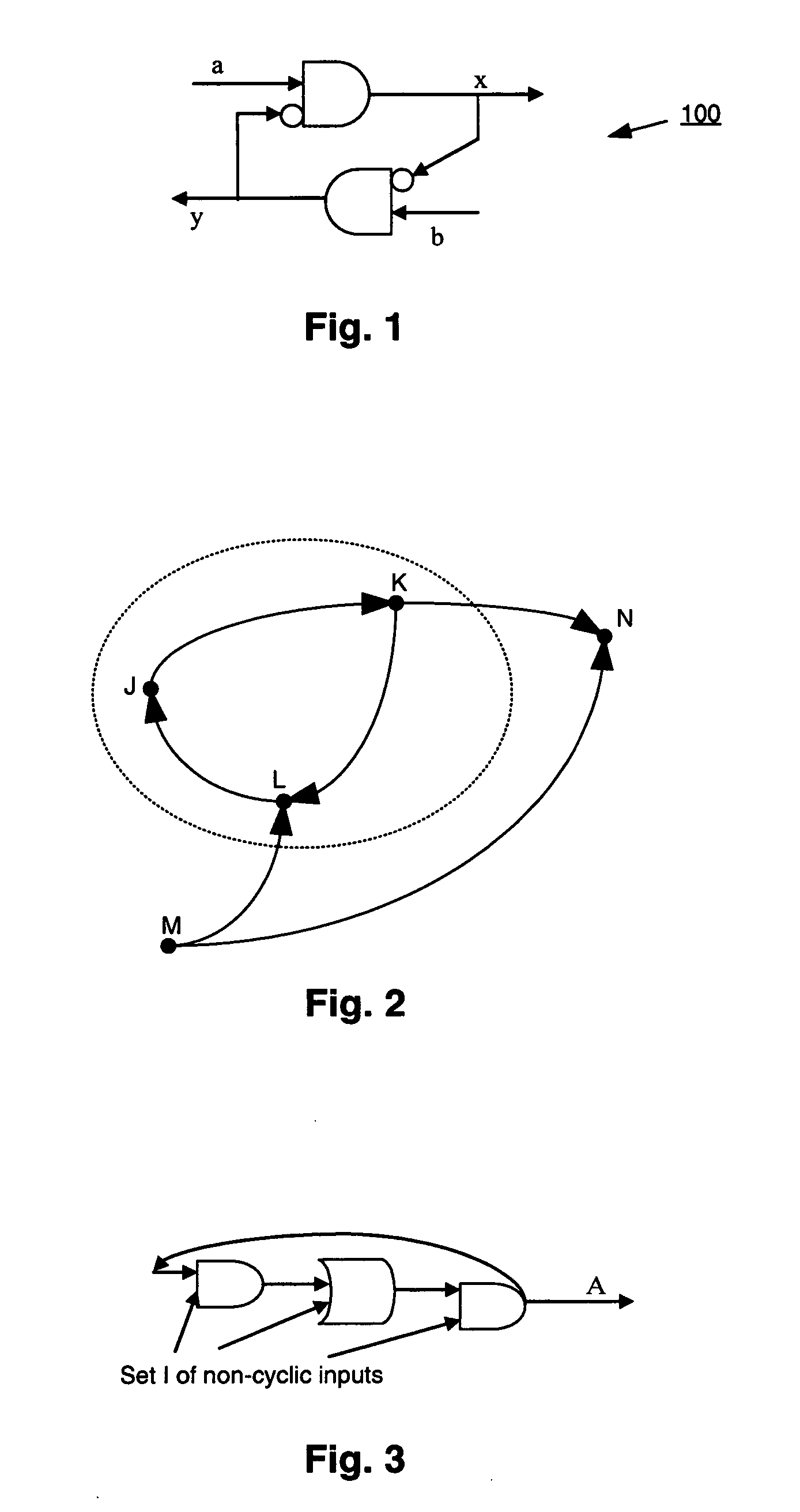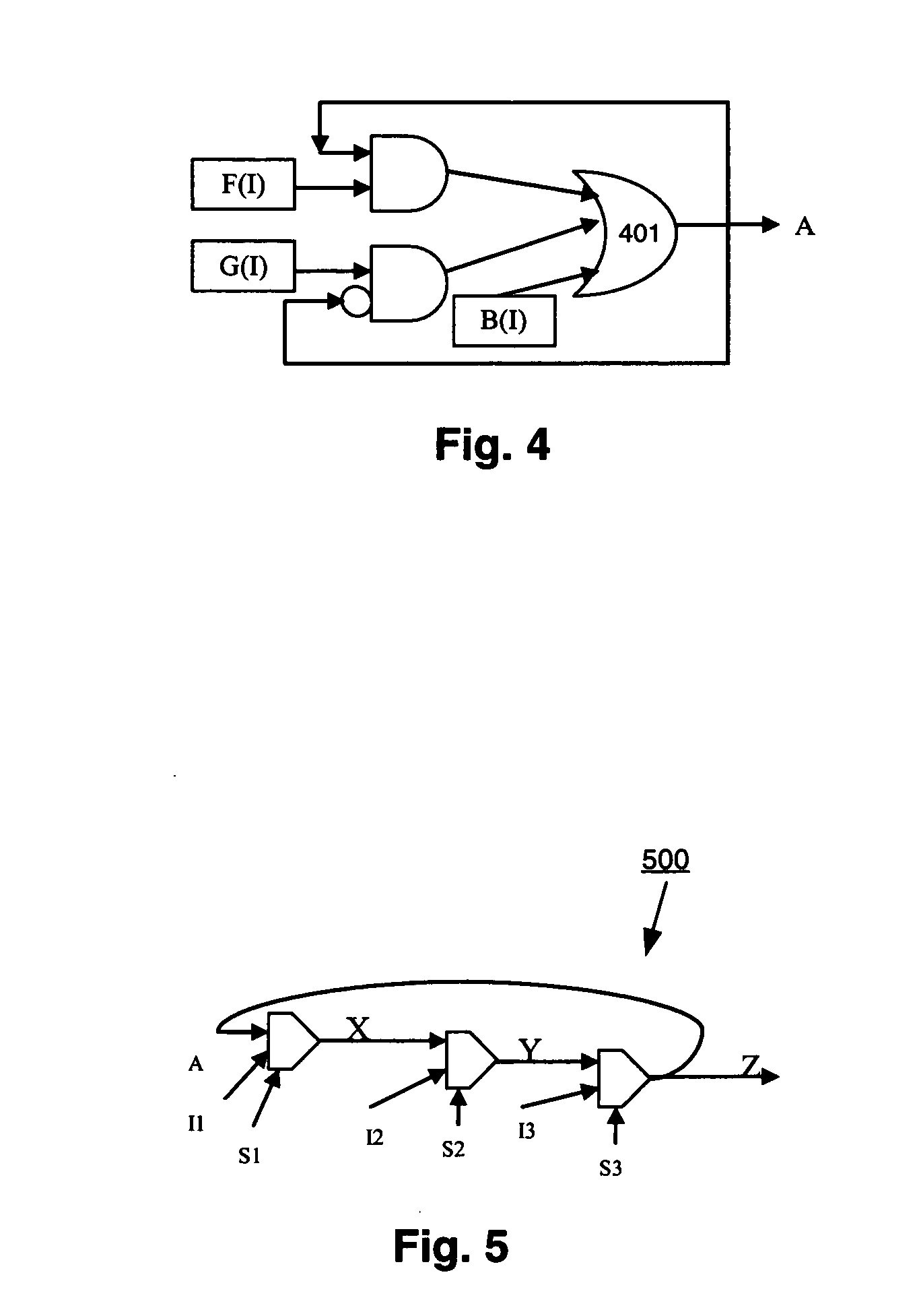Acyclic modeling of combinational loops
a combinational loop and acyclic modeling technology, applied in the direction of cad circuit design, program control, instruments, etc., can solve the problem of linear loop size and time complexity of the loop transformation methodology, and achieve the effect of increasing the design area
- Summary
- Abstract
- Description
- Claims
- Application Information
AI Technical Summary
Benefits of technology
Problems solved by technology
Method used
Image
Examples
Embodiment Construction
[0021] Aspects of the present invention may be viewed as improvements to previous methodologies, although a completely different analysis is used. An improvement lies in the fact that previous methodologies assert that the combinational loop 100 shown in FIG. 1, for example, is convertible to a non-loop equivalent unless a=b=1. However, in accordance with aspects of the present invention, combinational loop 100 is determined to be a “safe” loop that can be converted to a non-loop equivalent. This is because where a=b=1 in this example, then both x and y hold their previous values and a state-holding element such as a latch may be used to model x and y as an acyclic circuit.
1.0 Modeling Combinational Loops
[0022] Aspects of the present invention provide a compelling computer-implemented solution to modeling combinational loops as acyclic circuit in gate level designs. An efficient and linear-time solution is provided that detects the fixed-point behavior of combinational loops in g...
PUM
 Login to View More
Login to View More Abstract
Description
Claims
Application Information
 Login to View More
Login to View More - R&D
- Intellectual Property
- Life Sciences
- Materials
- Tech Scout
- Unparalleled Data Quality
- Higher Quality Content
- 60% Fewer Hallucinations
Browse by: Latest US Patents, China's latest patents, Technical Efficacy Thesaurus, Application Domain, Technology Topic, Popular Technical Reports.
© 2025 PatSnap. All rights reserved.Legal|Privacy policy|Modern Slavery Act Transparency Statement|Sitemap|About US| Contact US: help@patsnap.com



